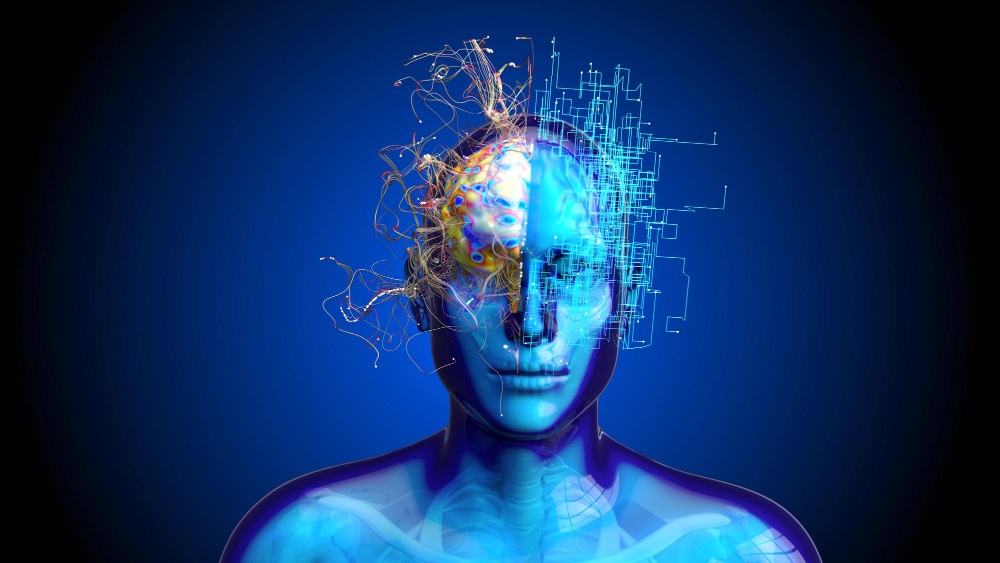Artificial intelligence has advanced to a point where systems are now not only empowered to make decisions but also to monitor, correct, and even validate each other. In today’s fast-moving software environment, the role of test management tools has become updated, allowing organizations to manage ever-complex testing scenarios. One of the most promising advancements among these scenarios is agent-to-agent testing, a technique where AI-driven agents validate the behavior and reliability of other AI engines. This goes beyond conventional testing techniques, presenting a new dynamic layer of intelligence with testing validation that itself is adaptive, collaborative and scalable.
This blog delves into the domain of agent-to-agent testing in detail. The discussion will cover its principles, methods, and its challenges as well.
Understanding Agent-to-Agent Testing
Agent-to-agent testing can be understood as a method in which intelligent agents are used to test the functional capabilities and performance of other agents or systems. Rather than using human testing agents, agent-to-agent testing uses intelligent agents as the testers. These agents test, imitate user behavior, test for errors, and stress test systems, and thus validate the experiences of another AI, system or agent.
The Importance of Agent-to-Agent Testing
Today’s digital environments are interconnected. Applications interact with cloud platforms, IoT devices communicate over a network, and autonomous agents work together in real time. In such environments, reliability cannot be left to chance. Agent-to-agent testing ensures:
- Autonomy in Validation: AI-powered tester agents can independently verify outcomes without the need for humans.
- Real-Time Adaptation: Agents can modify their validation approaches based on the behavior of the system being evaluated.
- Scalability: Testing can evaluate thousands of AI responses concurrently, something that is not achievable with manual testers.
- Resilience: Systems evaluated using AI agents will be able to respond to unpredictable inputs or environmental failures more resiliently and effectively.
These advantages articulate why organizations are starting to use agent-to-agent testing in their continuous testing and validation ecosystem.
The Foundation of Agent-to-Agent Testing
To appreciate how agent-to-agent testing works, three foundational elements must be considered:
- Agents as Validators: Agents are autonomous systems that are designed for the purpose of testing. Agents can produce scenarios, observe behavior, and assess whether or not the outcomes matter.
- Communication Protocols: If one AI is testing another, there needs to be some structured type of communication. Protocols allow agents to communicate tasks, data, and evidence reliably.
- Adaptive Learning: Testing agents do not remain fixed; they are constantly adapting their testing approaches through learning algorithms to push the systems past their static test cases to potentially expose shortcomings.
In combination, these components make up the foundation of a system where validation is not a one-time endeavor, but an evolution of discovery and refinement.
Key Mechanisms in Action
Agent-to-agent testing relies on specific mechanisms for it to be successful.
- Scenario Simulation: Testing agents are simulating scenarios based on real-world scenarios or extreme scenarios like high user workload, sudden system failure.
- Feedback Loops: Outcomes are observed, and the feedback is used to adjust the further test.
- Anomaly Detection: Intelligent testers are looking for patterns that go outside of expected behavior to recognize shortcomings that may otherwise be hidden.
- Stress and Recovery Testing: Agents are looking to see how a system works when recovering from an event or exhausted resources.
- Decision Validation: For AI models, validation includes checking whether decisions align with ethical, logical, or contextual standards.
These mechanisms provide robustness to the testing process and make agent testing adaptable to many industries.
Real-World Applications of Agent-to-Agent Testing
Autonomous Vehicles
Self-driving cars use multiple AI agents to navigate, ensure safety, and interact with users. The ability of one AI system to test against unpredictable road scenarios with another system validating the vehicle response minimizes risks before the vehicle ever reaches real-world conditions.
Financial Systems
AI agents are used for fraud detection and credit scoring within banking platforms. Test agents, facing processor overload, can simulate fraudulent activities or atypical spending behavior to validate the fraud detection system or credit scoring system.
Healthcare Technology
In healthcare technology, AI diagnostic tools are tested with validation agent systems that provide varied patient data populations, including some exhibiting edge-case conditions. Testing generates a quality outcome based on the AI diagnostic decisions.
The Role of Test Management in Agent-to-Agent Testing
Despite introducing some level of automation and intelligence, the lifecycle of testing still has to be managed. Test management tools provide that management. They offer the structure for creating plans, tracking validation activities, and analyzing testing, even if agents will actually do the testing.
Those tools ensure that:
- Testing targets are made specific and measurable.
- Test results generated by agents are gathered and evaluated.
- The progress of testing aligns with the quality standards of the organization.
- Historical results of those tests allow for improvements to be made in the testing strategy.
In other words, agent-to-agent testing still has to be managed in a disciplined way, and that is where test management frameworks remain vital. For advanced testing like agent-to-agent validation, a reliable platform is essential. LambdaTest provides a cloud-based environment for running tests across thousands of browsers and devices without extra infrastructure.
LambdaTest’s Agent-to-Agent Testing allows AI agents, like chatbots or voice assistants, to test each other automatically. Instead of manually writing countless test scenarios, specialized AI agents simulate real-world interactions, identifying issues such as broken conversation flows, logic errors, or inconsistent responses. This helps ensure that AI systems behave reliably and provide smooth, natural user experiences.
At the heart of this platform is KaneAI, LambdaTest’s AI-powered testing assistant. KaneAI allows teams to design and run tests using natural language, generating scenarios, evaluating agent performance, and catching problems early. By automating these interactions, the platform streamlines AI testing, improves coverage, and helps developers build high-quality, dependable AI agents.
Advantages of Agent-to-Agent Testing
- Speed: As agents operate all the time and in parallel, the time to complete testing cycles is reduced significantly.
- Consistency: Agents do not experience boredom or fatigue like humans. Thus, agents provide consistent validation.
- Edge Case Scenarios: Agents can represent situations humans would not.
- Continuous Learning: As the surrounding environment changes, the testing agents can update their approach.
- Cost Savings: Over time, using less time to complete testing cycles can result in savings of time and cost.
Challenges and Limitations
Agent-to-agent validation can be promising; however, there are very significant challenges:
- Complexity in Design: Building intelligent testing agents requires significant expertise
- Interpretability: Understanding why one AI flagged the decision of another AI as incorrect can be difficult, especially in black box systems.
- Ethical challenges: If testing agents perpetuate inherent biases in decision-making, agents would not represent valid validation.
- Integration with Legacy Systems: Testing agents do not always work with legacy systems.
- Oversight: Humans must always validate high-stakes decisions (e.g., medical diagnosis).
These challenges reinforce that, while agent-to-agent testing is a strong method, it should not replace all methods of validation.
Testing with AI: Shaping the Future
The term testing with AI signifies an enormous shift in software quality. Instead of AI being only the subject of testing, it is now a critical partner in conducting the tests themselves. This shift expands the potential of testing.
Testing through AI allows validation to be proactive instead of reactive. Problems are found earlier, adaptation happens instantly, and scalability is at new heights. This transition is a perfect match for agile development cycles and continuous integration pipelines.
As organizations grow digital ecosystems, testing through AI is no longer a technical advantage; it also becomes a necessary condition for competitiveness and trustworthiness.
Ethical Perspective of Agent-to-Agent Testing
Validation accounts for not just technical correctness, it also accounts for ethical accountability. For instance, in the case of:
- Bias Detection: Testing agents can help to observe if another AI system behaves fairly towards users, irrespective of any demographic attributes.
- Transparency: If a system makes decisions without the possibility of obtaining any kind of explanation, testing agents can push back on the outcome to request an explanation.
- Privacy Supported: Testing agents should ensure that agents are respecting data privacy standards while validating or discussing information that is sensitive.
These layers of ethics are important, especially in fields like healthcare, finance, and government, where failing to appropriately validate AI outputs could lead to dire consequences.
Agent-to-Agent Testing and Continuous Deployment
In continuous deployment pipelines, software is frequently updated and then immediately deployed for end-users. The pace of this work stream makes continual validation necessary. Agent-to-agent testing greatly assists this workflow by providing automated validation for environments when updates are made.
Testing agents can track for regression and deprecation of performance to ensure speed does not mean losing the quality of the software. As a result, agent-to-agent testing will become an important part of the DevOps way of working.
Future Considerations
Where agent-to-agent testing is heading can be estimated based on current trends:
- Hyper Autonomous Validation: Agents will have the capacity to generate their own test cases and design target systems without human interaction.
- Cross-Domain Collaboration: Testing agents affiliated with different domains may be able to validate each other’s systems and protect each domain from failures across domains.
- Integration with Digital Twins: Virtual twin-like representations of systems will support agents to safely test situations from the perspective of the system prior to actual deployment in a real-world production context.
- AI Governance Support: Regulatory oversight may leverage frameworks like agent-to-agent testing to ensure compliance with standards.
- Quantum Computing: As computational power grows, agent-to-agent testing will scale to unprecedented levels.
Conclusion
Agent-to-agent testing is a fundamental change in validation. Now, intelligent agents test other intelligent systems, resulting in a competence development feedback loop that promotes accuracy, adaptability, and resilience. The downside is the existing vulnerability of technology, but we must not lose sight of the productivity, scalability, and iterative improvements of agent-to-agent testing. The anticipated growth of digital ecosystems will make it a reliable and secure technology for the future.










